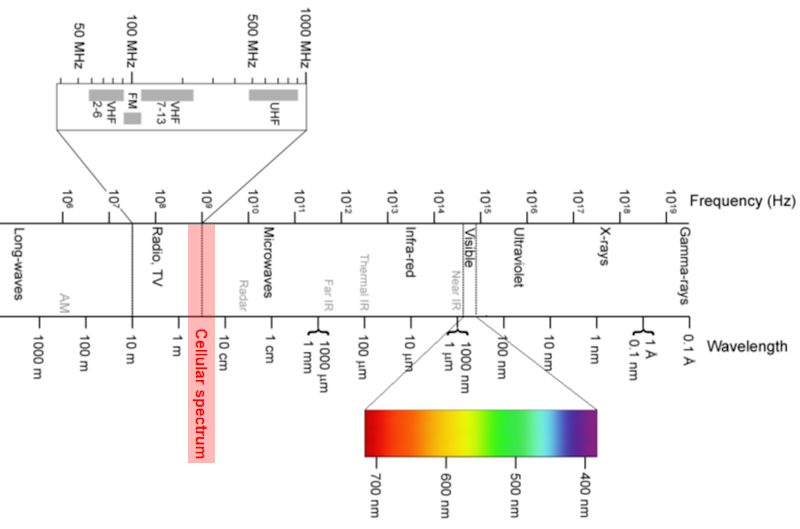Knowledge Base
How do window tint and low-e glass affect cell signals?
 Cellular devices operate in the UHF band of the radio spectrum, which is absorbed by low‑e glass. (Click to enlarge.)
Cellular devices operate in the UHF band of the radio spectrum, which is absorbed by low‑e glass. (Click to enlarge.)
Low-e glass contains metal or has a metallic film coating that blocks most electromagnetic (EM) radiation from passing through the glass, minimizing the amount of ultraviolet (UV) and infrared radiation (heat energy) that enters the building, while still allowing visible light to pass through. Because radio frequency (RF) signals used by cellular devices fall on the infrared spectrum, low-e glass causes reception problems for cell phone users inside the building. (See the attached EM spectrum chart.)
There are even certain types of low-e glass are specifically used to block all RF signals, including cell signals, to prevent transmission into or out of the building. This type of glass is used in highly secure buildings.

